Western snowy plovers (Charadrius alexandrinus nivosus) are small shorebirds with pale brown or gray sand-colored backs and white breasts. Pacific coast populations generally nest within 50 miles of the ocean on the mainland coast, and coastal locations consist of both wintering migrants and year round residents. Plovers commonly breed above the high tide line on sparsely vegetated sandy coastal beaches during the winter months.
The species was listed as federally threatened in 1993. In California, there has been a significant decline in breeding locations because of increasing recreational use of beaches and other various forms of human disturbance. Their diminishing numbers are also largely due to habitat loss and degradation from the encroachment of nonnative beach grass and other vegetation, along with the increased threat of non-native predators such as common ravens and foxes.
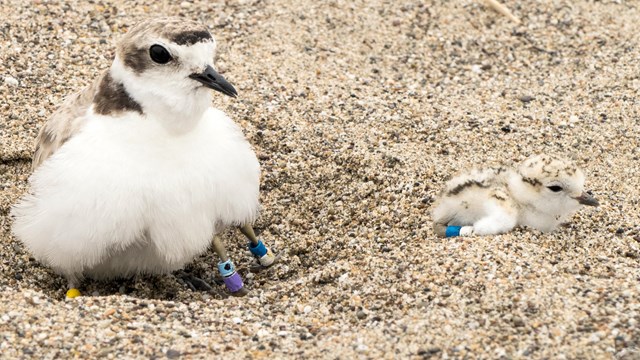
Browse articles and information summaries about western snowy plovers in the San Francisco Bay Area.
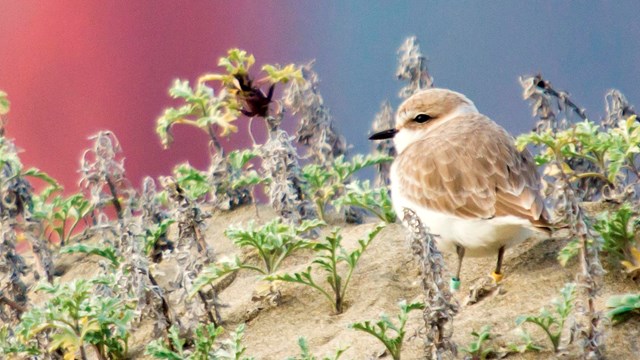
Take a closer look at western snowy plovers in the San Francisco Bay Area.
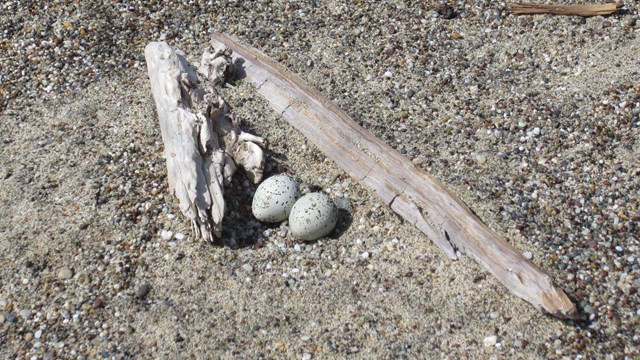
Get the latest on western snowy plovers from the Bay Area Nature & Science Blog.
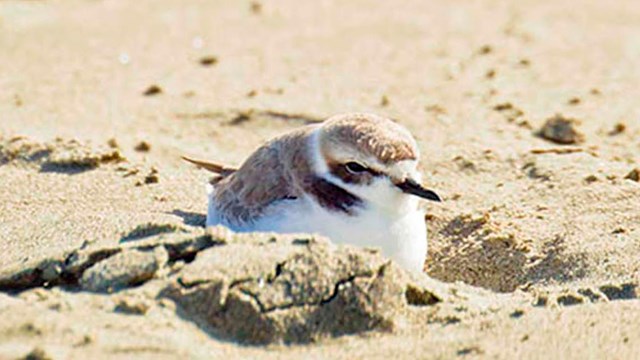
Explore more research, reports, and resources on western snowy plovers in San Francisco Bay Area parks.
Long-term Monitoring
Breeding plovers have been monitored at the Point Reyes National Seashore since 1995. The San Francisco Bay Area Network Inventory and Monitoring Program took over monitoring in 2008. Biologists look for nests, and collect data on eggs, hatchng, fledgling, and mortality. Over these years, the park has experimented with a variety of management measures to help plovers reproduce successfully, including protective fencing around nests, seasonal closures around nesting habitat, and invasive plant removal. They have also instituted a successful weekend docent program that educates visitors on how to help protect plovers while visiting the park. Monitoring helps to guage the success of these efforts.
Golden Gate National Recreation Area staff and volunteers have been monitoring overwintering snowy plovers at Ocean Beach since 1994, and at Crissy Field since 2004. Time, weather, tide, and plover number, location, and behavior are recorded during twice per week. Sources of disturbance including equestrians, vehicles, aircraft, kites, raptors, people, and dogs are also noted.
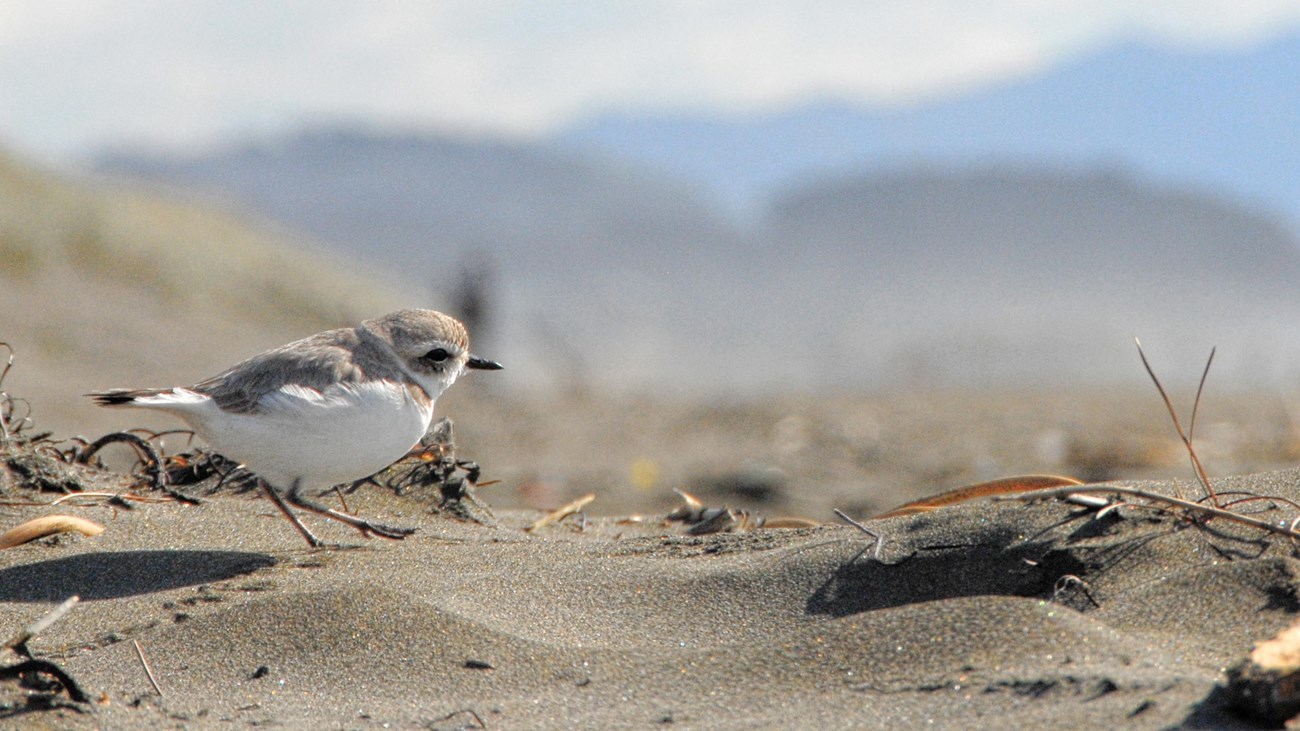
Dig in to monitoring protocols, reports, and more on the San Francisco Bay Area Network's Western Snowy Plover Monitoring page.
Last updated: October 1, 2019
